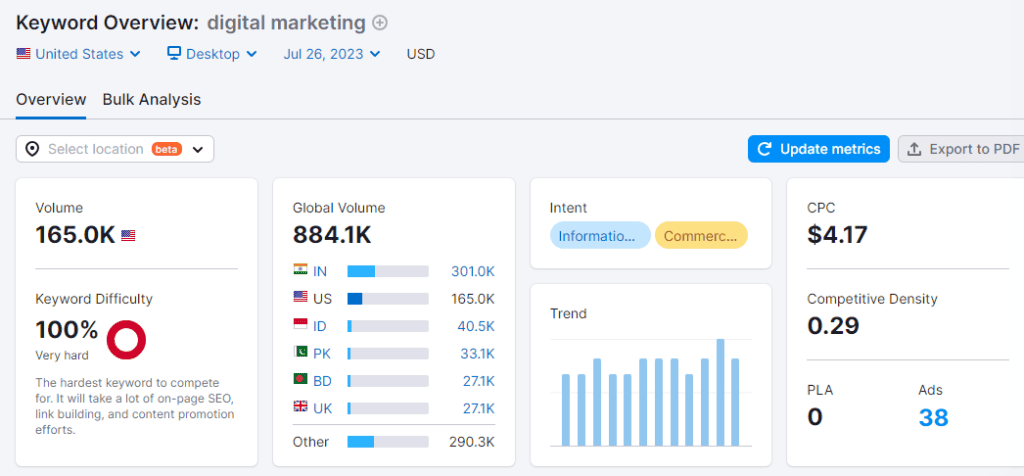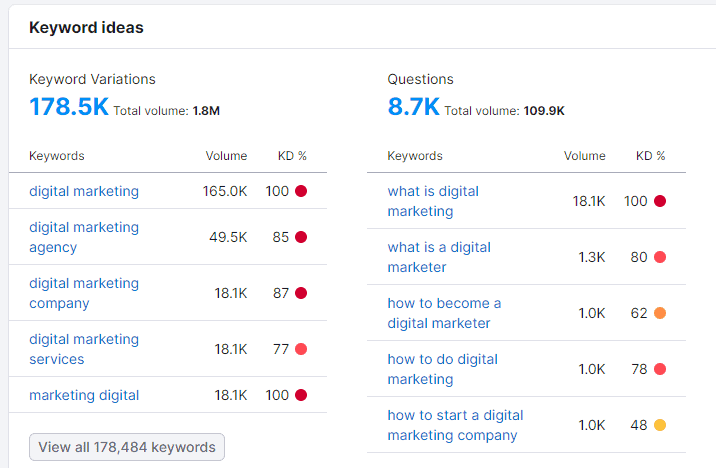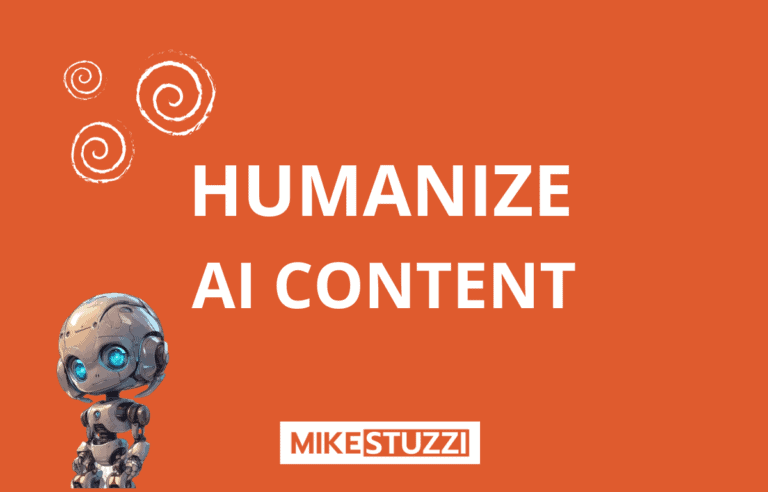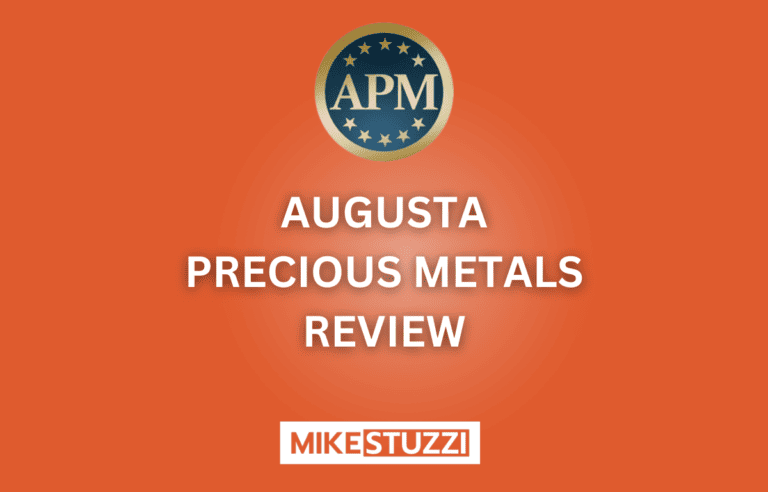The Content Optimization Guide for Beginners
It’s evident that millions of pieces of content compete for attention on the Web in this day and age. For this reason, content optimization is the key to standing out and making a lasting impact.
The truth is that crafting compelling and valuable content is only the first step. Ensuring that your words reach the right audience and resonate with them is what sets high-performing content apart from the rest.
Content optimization is a holistic approach to refining your content to make it search engine-friendly, user-centric, and conversion-oriented. In this content optimization guide for beginners, we delve into the strategies and tools for unleashing the true potential of your content.
Read also: Best Content Optimization Tools to Use
What Is Content Optimization?
Content optimization simply means improving and fine-tuning digital content (like a blog post) to boost its visibility, relevance, and performance on various platforms. While most content optimization efforts target search engines, you could also optimize content for social media sites and other platforms. The goal is to ensure that your content reaches the target audience and results in meaningful actions like more traffic, engagement, or conversions.
Why Should You Optimize Your Content?
Content optimization is essential for a variety of reasons that I’ll mention below:
- Improving your SERP (search engine result pages) rankings: Content optimization, particularly through strategic keyword usage and on-page SEO techniques, increases your content’s chances of ranking higher in searches. This is how you can get more clicks from users on the Internet.
- Attracting the right audience: Optimizing your content also ensures that it aligns with the needs, interests, and search intent of your desired audience. If you address someone’s pain points, they’re more likely to interact further with your content and take the required actions.
- Building thought leadership: Optimized content with valuable insights, expertise, and solutions positions you as a thought leader in your niche. When your content consistently offers valuable information, readers perceive you as an authoritative source.
- Increasing conversions and sales: A well-optimized landing page, for example, can persuade visitors to sign up for a newsletter, make a purchase, or seek additional information.
How to Optimize Your Content for Search Engines (SEO)
We’ll begin with how you can make your content search engine-friendly and ready to rank on Google.
1. Keyword Research
SEO content optimization won’t be possible without proper keyword research. The reason is that putting specific keywords on a page is how you make Google understand what you’ve written about and possibly show your content for relevant search queries. Even if you did keyword research when writing, content optimization involves doing it again to discover additional or trending keywords with great potential.
You can do keyword research for free using tools like Google Trends or invest in a tool like Semrush for comprehensive keyword data. Semrush is an all-in-one SEO platform that has a suite of tools specifically for keyword research.
Let’s look at Keyword Overview, one of Semrush’s keyword tools that you can use at no cost but with limits.

What happens is that you enter a keyword and click on the tool’s search button to get deeper insights into it. You can enter 1 up to 100 separate keywords that come to your mind. From the example, I searched for “digital marketing.”

As you can see, this is a hard keyword to rank for, according to Semrush’s Keyword Difficulty (KD) score. Besides the difficulty level, you can also see the overall search traffic for the term, the intent, and the cost per click (CPC).
Now, this particular keyword is what we call a short-tail keyword. It’s broad and too general. Lots of sites have already written about it and established solid rankings for it.
But tools like Semrush also show you alternative long-tail keywords that are easier to rank for. These ones are usually narrowed down, more specific, and contain more words.

From the above screenshot, you can see phrases that have lower difficulty scores, like “how to start a digital marketing company.” Clicking on it provides even more keyword ideas with much lower difficulties, such as “how to start a digital marketing company in [location].”
I have a separate article with details on what you can do with a free Semrush trial and even the limited unpaid version.
2. Keyword Placement
Once you’re done with keyword research, the next step in content optimization is to place the keywords naturally into your content. Keyword placement is a crucial content optimization aspect that helps search engines understand the relevance of your content to users’ search queries. Properly placing keywords in strategic locations within your content can improve your chances of ranking higher in search engine results and attracting the right audience.
Check out the key areas below where you should place keywords for effective content optimization:
Title Tag
You need to include your primary target keyword in the title to clearly indicate the main focus of your content to search engines and users. Make sure that your titles are concise, engaging, and 60 characters or less to ensure that they display properly in search engine results. Also, it’s better if your keyword appears at the beginning of the title as compared to the middle or the end.
Meta Description
You’ve probably already heard that meta descriptions don’t directly impact search rankings, or maybe you haven’t. But the thing is that a meta description plays the role of enticing users to click on your content from search results. You need to keep the length at a maximum of around 160 characters for proper display on search results.
Headings (H1, H2, H3, etc.)
It’s wise to use keyword-rich headings as they help to structure your content and make it more scannable for search engines. A good idea is to include your primary keyword in the main heading (H1) and relevant variations in subheadings (H2, H3, etc.) to highlight different sections of your content.
Opening Paragraph or Introduction
Introducing your target keyword early in the opening paragraph to signal the topic’s relevance works like magic. You can also insert variations of it in other sections of the first paragraphs of your content’s introduction. Don’t just fix it but make sure that the keyword insertion feels natural and fits into the context of the content.
Main Content Body
You need to sprinkle variations of your target keyword and related terms throughout the main content. However, it would be wise to prioritize the reader’s experience and avoid stuffing keywords. This bad SEO practice can negatively affect your rankings.
URL Structure
Incorporate your primary keyword in the URL to create a descriptive and user-friendly link that helps search engines and users understand the content’s topic. Be sure to use hyphens to separate words in the URL for better readability.
Image Alt Texts
Your images should contain descriptive texts of what your content is about. These are known as the alt tags. Including relevant keywords that describe the image accurately helps search engines know what your image is about and even rank them on image results.
3. Addition of Internal and External Links
Both of these links play a role in helping search engines understand the relationships between different web pages and the overall authority and relevance of a website.
Internal links are links that connect one page of a website to another page within the same domain. They are essential for both SEO and user experience and SEO. Internal links do the following:
- Create a logical structure within a website and guide search engine crawlers to navigate and index the entire site effectively
- Help distribute link authority (also known as link juice) from one page to another within the same domain (that is, higher to lower authority pages)
- Linking to new or less visible content from well-established pages on your site assists search engine crawlers in discovering that content more easily
External links point from one website to another outside of the domain. They don’t directly impact your site authority but help with the following:
- Links to reputable and authoritative sources signal to search engines that your content is trustworthy and relevant
- They help search engines understand the context and topic of your content better
- If other sites return the favor, it boosts your page’s authority
4. Optimization of Blog Content Length
There’s been lots of debate on how long your blog content should be to rank well on Google. The truth is that it may vary depending on the topic, your competition, and your site’s authority.
Some topics are quick to write about and may be covered in less than 1,000 words. Others can take more words to ensure that your post is detailed enough.
Also, you’ll likely rank well even with a short article if it has little to no competition. Additionally, a high-authority site with short but good enough content can outrank a low-authority site with lengthy content.
It’s wise to analyze the top pages on Google for any keyword to know how to best approach the matter. If the top page has 3,000 words, aiming for the same or even more can help your content get discovered too.
Some takeaways about blog content length are:
- Quantity matters but the quality of your content should always take precedence
- Long-form content, typically ranging from 1,500 to 3,000 words or more, tends to perform well in search engine rankings
- In longer content, you have the opportunity to cover a topic more comprehensively and provide more value (another SEO vote)
How to Optimize Your Content for Readers
Most SEO content optimization tactics mentioned before in the article also help with readership. But there’s more you can do to ensure your content suits your readers.
5. Content Structure
It doesn’t matter whether it’s a blog post, article, webpage, or any other form of content. Having a clear and logical structure is essential for effectively conveying information to the audience. A well-structured piece of content not only enhances readability but also improves user experience and SEO performance.
A good content structure has these elements:
- Proper headings and subheadings
- Different font sizes for headings, subheadings, and text
- Well-organized paragraphs with short and readable sentences
- Bulleted and numbered lists in place of long pieces of information
- White space to give your content room for breathing (and your readers)
- A sequential flow of ideas and not everything appearing everywhere
6. Addition and Optimization of Images (and Videos)
Incorporating relevant images, infographics, videos, and other visual elements is how you can complement the text and make the content more engaging. One of the things to consider is the value of the image to the reader. Don’t add a bunch of irrelevant images that would actually do the harm of increasing the page load time for no reason.
For instance, infographics can help break down complex topics in a visually appealing way. Videos on your page can also help to keep readers on your site for longer periods, even if they don’t read the whole text.
Be sure to reduce the sizes of images to boost loading speeds. You can do it manually or better yet, use an image compression plugin on WordPress. Such a tool will automatically cut the size of all images you upload for quick loading and a better user experience.
7. Readability Check
It would help if you check the readability of your content to ensure that any reader can comprehend it. Things that help with readability include:
- Shorter sentences and paragraphs
- Transition words
- Not beginning consecutive sentences with the same word
- Simple terms with no jargon
- Good grammar
A plugin like Yoast can show you how readable your content is. Several writing assistants and editing tools can also help.
An example is Grammarly. Such a tool helps you improve your sentence structure, eliminate redundancy, remove complex words, and get rid of spelling or punctuation errors.
How to Optimize Your Content for Conversions
Lastly, we look at ways to boost conversions by optimizing your content accordingly.
8. Commercial Keywords
Commercial keywords, also known as transactional keywords, are specific search terms that indicate a user’s intent to make a purchase or engage in commercial activities. These keywords are highly valuable for businesses because they target users closer to the end of the buying journey and more likely to turn into customers.
Commercial keywords reflect user intent to take action, such as “buy,” “purchase,” “order,” “subscribe,” “get a quote,” or “sign up.” You can optimize your content and advertising campaigns around such keywords to attract users actively looking for particular products or services.
9. Persuasive Language
Persuasive language can be a powerful content optimization technique used to influence and engage the audience to take action. Whether you need them to make a purchase, join a newsletter, or fill out a form, below are ways to be more persuasive:
- Emotional appeal: Storytelling, vivid imagery, and language that evokes emotions are all essential for creating a connection with your audience and making your content more memorable.
- Benefit-oriented language: Don’t just talk about the general features of a product or service. Mention how something can solve problems, fulfill desires, or improve the lives of your customers.
- Urgency and scarcity: Limited-time offers, exclusive deals or low-stock notifications can motivate potential buyers to act faster and avoid missing out.
- Social proof and testimonials: Customer testimonials, reviews, and case studies demonstrate the positive experiences of others and can do a lot of convincing.
Read more about SEO copywriting.
10. CTA Optimization
A well-optimized call-to-action (CTA) button can significantly impact user behavior and improve conversion rates. In this case, focus on the following:
- Shortness and clarity: The CTA should be quick and clear about what you need someone to do.
- Positioning: Place your CTA in easy-to-spot areas of your content. You can place it above the fold for people to see without scrolling down. It’s wise to use a CTA several times.
- Visibility: Make your CTA bold or give it a different color from the rest of the text.
Conclusion
Content optimization is a powerful strategy to establish a presence in your industry and compete for the high traffic of numerous search terms. Optimizing for both search engines and users helps you get the best from both sides.
You have to keep in mind that content optimization isn’t a one-and-done kind of thing. You’ll continuously need to review and update various aspects of your content to stay at the top.







